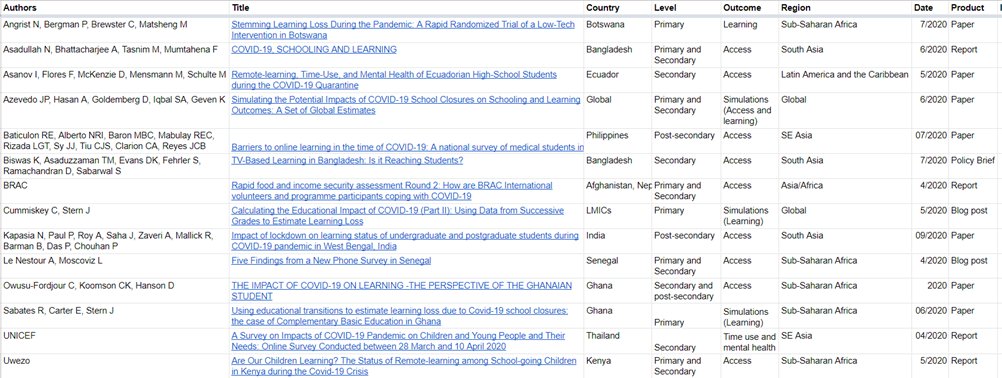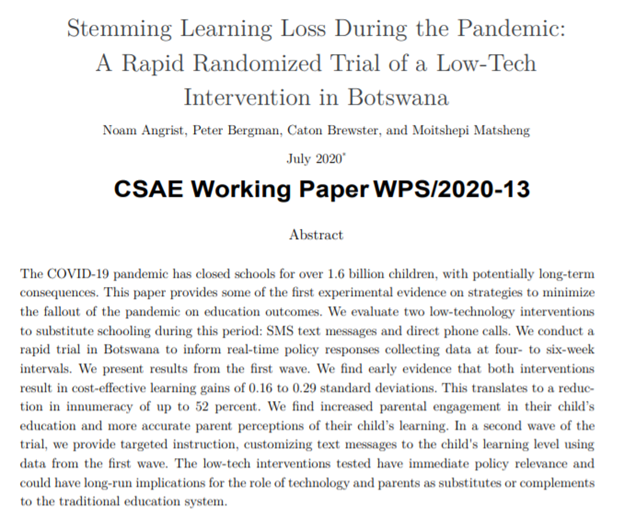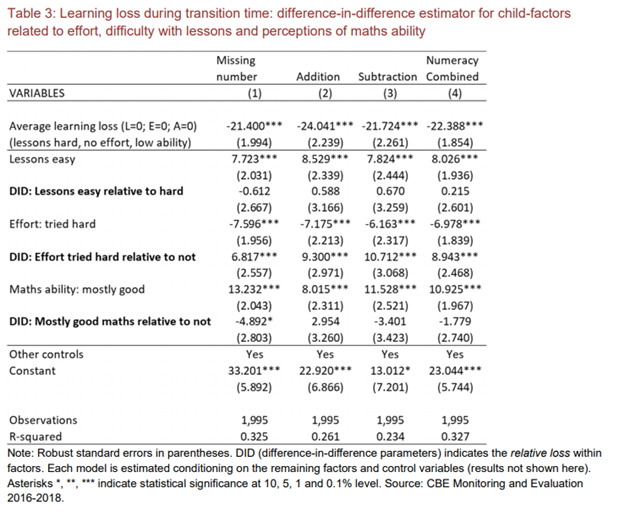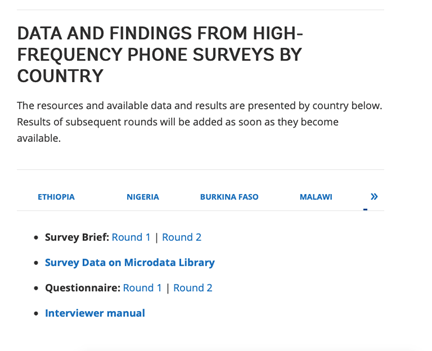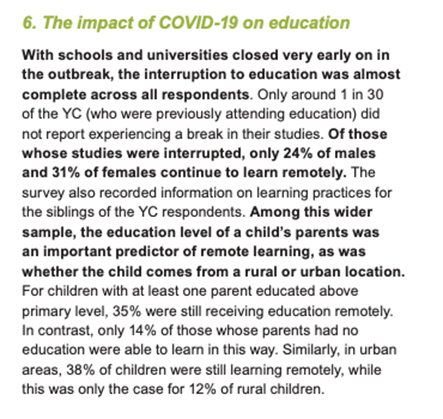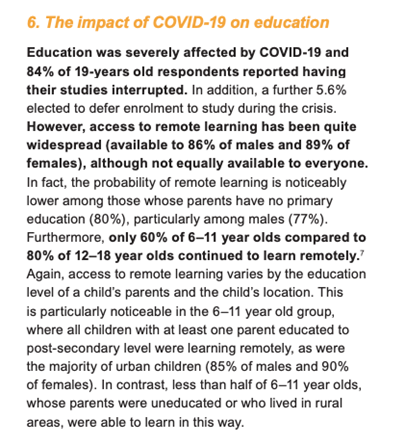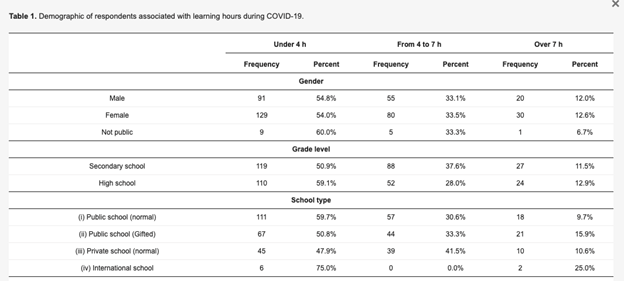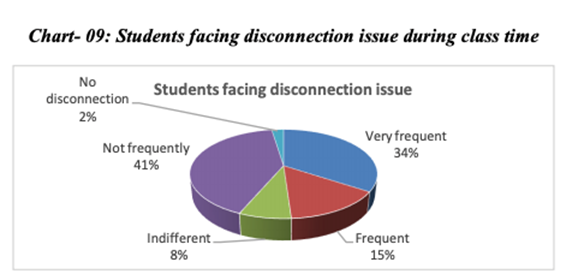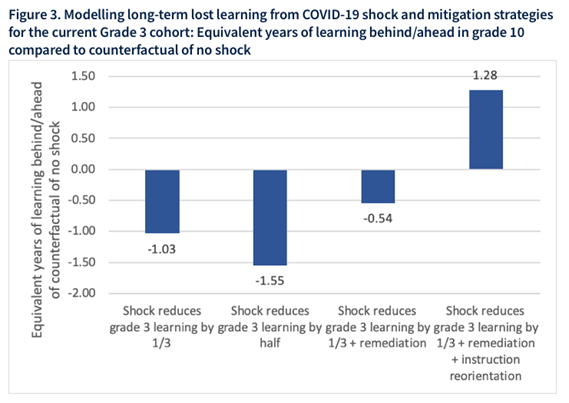What is the impact of #COVID19 on children and youth’s access to learning opportunities and on their actual learning in low- and middle-income countries?
A running thread of studies by @AcostaAminaM and me
Our running list is also available here: https://bit.ly/31wqzm2
1/N">https://bit.ly/31wqzm2&q...
A running thread of studies by @AcostaAminaM and me
Our running list is also available here: https://bit.ly/31wqzm2
1/N">https://bit.ly/31wqzm2&q...
Most studies to date focus on *access* to educational opportunities. An exception is “Stemming Learning Loss During the Pandemic: A Rapid Randomized Trial of a Low-Tech Intervention in Botswana”.
https://www.csae.ox.ac.uk/materials/papers/csae-wps-2020-13.pdf">https://www.csae.ox.ac.uk/materials... by @angrist_noam, @peterbergman_, et al.
https://www.csae.ox.ac.uk/materials/papers/csae-wps-2020-13.pdf">https://www.csae.ox.ac.uk/materials... by @angrist_noam, @peterbergman_, et al.
Several more studies examine *access* at the primary, secondary, and post-secondary levels.
In Ecuador, direct phone queries to secondary school students revealed substantial engagement but sizeable differentials between the richest and poorest.
Paper: https://documents.worldbank.org/en/publication/documents-reports/documentdetail/328261589899308503/remote-learning-time-use-and-mental-health-of-ecuadorian-high-school-studentsduring-the-covid-19-quarantine">https://documents.worldbank.org/en/public... by @Asanov_Igor et al.
Blog: https://blogs.worldbank.org/impactevaluations/measuring-how-youth-spend-their-time-when-schools-are-closed
Questionnaire:">https://blogs.worldbank.org/impacteva... https://www.poverty-action.org/questionnaire/showing-life-opportunities-covid-19-rapid-response-survey">https://www.poverty-action.org/questionn...
Paper: https://documents.worldbank.org/en/publication/documents-reports/documentdetail/328261589899308503/remote-learning-time-use-and-mental-health-of-ecuadorian-high-school-studentsduring-the-covid-19-quarantine">https://documents.worldbank.org/en/public... by @Asanov_Igor et al.
Blog: https://blogs.worldbank.org/impactevaluations/measuring-how-youth-spend-their-time-when-schools-are-closed
Questionnaire:">https://blogs.worldbank.org/impacteva... https://www.poverty-action.org/questionnaire/showing-life-opportunities-covid-19-rapid-response-survey">https://www.poverty-action.org/questionn...
Two studies look at access in Bangladesh. @Niaz_Asadullah et al. look at urban slums and rural areas in Bangladesh.
https://bigd.bracu.ac.bd/wp-content/uploads/2020/06/COVID-19-Schooling-and-Learning_June-25-2020.pdf">https://bigd.bracu.ac.bd/wp-conten...
https://bigd.bracu.ac.bd/wp-content/uploads/2020/06/COVID-19-Schooling-and-Learning_June-25-2020.pdf">https://bigd.bracu.ac.bd/wp-conten...
Among Grade 9 lower income students in Bangladesh, few may be accessing the government distance learning programs: “TV-Based Learning in Bangladesh: Is it Reaching Students?” by Biswas et al. (including me and @Shwetlena). https://openknowledge.worldbank.org/bitstream/handle/10986/34138/TV-Based-Learning-in-Bangladesh-Is-it-Reaching-Students.pdf?sequence=4&isAllowed=y">https://openknowledge.worldbank.org/bitstream...
Across nine countries, @BRACworld finds large variation in children studying at home: https://covid19.bracinternational.nl/wp-content/uploads/2020/04/BI-COVID-19-Rapid-Assessment-Round2_20200424.pdf">https://covid19.bracinternational.nl/wp-conten...
In Senegal, thirty percent of children are not engaging in any learning activities, either digitally or through work given by parents or teachers. By @Alenestour and @lhmosco @CGDev.
Findings: https://www.cgdev.org/blog/five-findings-new-phone-survey-senegal
Data:">https://www.cgdev.org/blog/five... https://dataverse.harvard.edu/dataset.xhtml?persistentId=doi:10.7910/DVN/9XE95F">https://dataverse.harvard.edu/dataset.x...
Findings: https://www.cgdev.org/blog/five-findings-new-phone-survey-senegal
Data:">https://www.cgdev.org/blog/five... https://dataverse.harvard.edu/dataset.xhtml?persistentId=doi:10.7910/DVN/9XE95F">https://dataverse.harvard.edu/dataset.x...
In Kenya, less than a quarter of students can access digital learning. Older students and students enrolled in private schools have better access than younger counterparts and those in public schools. by @Uwezo_Kenya https://palnetwork.org/wp-content/uploads/2020/05/Usawa-Agenda-2020-Report.pdf">https://palnetwork.org/wp-conten...
An online survey of children and youth in Thailand (with most respondents age 15-19) suggests that many are not reviewing lessons. https://www.unicef.org/thailand/media/4031/file">https://www.unicef.org/thailand/... by @UNICEF
In higher education, a survey of medical students in the Philippines find adjusting to different learning styles and conflicting responsibilities at home a challenge, while device access is not an issue. https://www.medrxiv.org/content/10.1101/2020.07.16.20155747v2">https://www.medrxiv.org/content/1... by @RoniBats et al.
In India, more than half of undergraduate and post-graduate students report spending less time studying than before. 4 in 10 report feeling stressed, depressed or anxious, and one-third report internet connectivity challenges.
https://www.sciencedirect.com/science/article/pii/S0190740920310604">https://www.sciencedirect.com/science/a... by Kapasia et al.
https://www.sciencedirect.com/science/article/pii/S0190740920310604">https://www.sciencedirect.com/science/a... by Kapasia et al.
In Ghana, less than 2 in 5 secondary and post-secondary students have internet access and only 1 in 5 are able to study effectively from home. https://www.oapub.org/edu/index.php/ejes/article/view/3000/5638">https://www.oapub.org/edu/index... by Owusu-Fordjour, Komsoon, and Hanson.
Finally, we identified some simulations of the pandemic’s impact on education outcomes.
Cummiskey and @jonathanmbstern estimate learning loss due to school closures by using oral reading fluency scores from students in consecutive grades in 27 low and middle income countries. https://shared.rti.org/content/calculating-educational-impact-covid-19-part-ii-using-data-successive-grades-estimate">https://shared.rti.org/content/c...
@RSabates72 et al. do a related simulation specifically for Ghana: “We estimate that the learning loss suffered over a three-month period ranged from just over half to more than 100% of the gains attained during the prior year.” https://www.educ.cam.ac.uk/centres/real/publications/Using%20educational%20transitions%20to%20estimate%20learning%20loss%20due%20to%20Covid-19%20school%20closures.pdf">https://www.educ.cam.ac.uk/centres/r...
Globally, COVID-19 could lead to “a loss of between 0.3 & 0.9 years of schooling adjusted for quality, bringing down the effective years of basic schooling that students achieve ... from 7.9 years to between 7.0 & 7.6 years.” https://openknowledge.worldbank.org/handle/10986/33945">https://openknowledge.worldbank.org/handle/10... by @jpazvd et al.
We’ll add more papers as we encounter them! [End of thread... for today!]
Here is another batch of papers examining the impact of #COVID19 on education access and learning.
In Mongolia, 1 in 4 are not engaged in any distance learning activity. TVs are widely available in the country (and the most popular learning activity), but poor and rural households are less likely to own computers or smartphones. https://documents.worldbank.org/en/publication/documents-reports/documentdetail/656061595316484647/results-of-mongolia-covid-19-household-response-phone-survey-round-1">https://documents.worldbank.org/en/public... by @WorldBank
In Nigeria, 1 of 3 children did not engage in any learning activities in the past week, and “less than 1 in 5 households reported that they had any contact with children’s teachers.” https://documents.worldbank.org/en/publication/documents-reports/documentdetail/757201593465025800/covid-19-from-the-ground-up-what-the-crisis-means-for-nigerians">https://documents.worldbank.org/en/public... by Lain et al.
A similar rural-urban divide exists in Ethiopia: “almost twice as many urban children who had previously attended primary or secondary school are now engaged in learning activities.” More children in rural areas rely on education radio. https://documents.worldbank.org/en/publication/documents-reports/documentdetail/511101597307914033/results-from-a-high-frequency-phone-survey-of-households">https://documents.worldbank.org/en/public... by Wieser et al.
The Living Standards Measurement Surveys are supporting high-frequency phone surveys to track impact of Covid-19 & have results available for Ethiopia, Nigeria, & Mali (data coming soon for other countries). #5">https://www.worldbank.org/en/programs/lsms/brief/lsms-launches-high-frequency-phone-surveys-on-covid-19 #5">https://www.worldbank.org/en/progra... by @WorldBank LSMS-ISA Program
Using a phone survey, Young Lives investigates short- and medium-term impacts of the pandemic on the cohort of adolescents and young adults they have been tracking since 2001. The first survey round is available in four countries.
From Young Lives Peru, more than half of the 19-year-old cohort had their studies interrupted, and 2 out of 5 of those who were planning to enroll chose not to do so. https://beta.ukdataservice.ac.uk/datacatalogue/studies/study?id=8678">https://beta.ukdataservice.ac.uk/datacatal... by @alan_sanchezj
et al.
et al.
In a similar survey by Young Lives Ethiopia, only around 1 in 30 did not report a break in their studies. “Of those whose studies were interrupted, only 24% of males and 31% of females continue to learn remotely.”
https://www.younglives.org.uk/node/8958 ">https://www.younglives.org.uk/node/8958... by Scott et al.
https://www.younglives.org.uk/node/8958 ">https://www.younglives.org.uk/node/8958... by Scott et al.
In Vietnam, “children with at least one parent educated ... were learning remotely, as were the majority of urban children… Less than half of 6–11 year olds, whose parents were uneducated or who lived in rural areas, were.”
https://www.younglives.org.uk/node/8961 ">https://www.younglives.org.uk/node/8961... by Scott et al.
https://www.younglives.org.uk/node/8961 ">https://www.younglives.org.uk/node/8961... by Scott et al.
In India: “Of the young people who had their education interrupted, 28% were able to switch to virtual classes... 27% percent of those that were planning to enrol chose not to, due to the current crisis.” https://www.younglives.org.uk/node/8955 ">https://www.younglives.org.uk/node/8955... by @MartaFavara et al.
In Vietnam, secondary school students in public schools are likely to spend less hours studying during the Covid-19 school closures than counterparts in public schools for the “gifted”, private schools and international schools. https://www.mdpi.com/2071-1050/12/10/4195/htm">https://www.mdpi.com/2071-1050... by Tran et al.
In Pakistan, higher education students find erratic internet signal to be the main reason internet-related barrier for online classes. https://eric.ed.gov/?id=ED606496 ">https://eric.ed.gov/... by Adnan and Anwar
In Bangladesh, almost half of the surveyed university students report frequent disconnection issues during class time. https://papers.ssrn.com/sol3/papers.cfm?abstract_id=3638718">https://papers.ssrn.com/sol3/pape... by @GolamRamij1994 and Sultana
A survey of 30,383 students from 62 countries report on student satisfaction on the workload, teaching staff, and general support. https://www.preprints.org/manuscript/202008.0246/v2">https://www.preprints.org/manuscrip... by Aristovnik et al.
Finally, @MichelleKaffs estimates that “without mitigation, children could lose more than a full year’s worth of learning from a three-month school closure…remediation when children return to school reduces the long-term learning loss by half.” https://riseprogramme.org/publications/modeling-long-run-learning-impact-covid-19-learning-shock-actions-more-mitigate-loss">https://riseprogramme.org/publicati...
That& #39;s all for now! Be back soon, and let us know if there are other studies we& #39;ve missed. You can see our full, running list, here: https://bit.ly/31wqzm2 ">https://bit.ly/31wqzm2&q...

 Read on Twitter
Read on Twitter